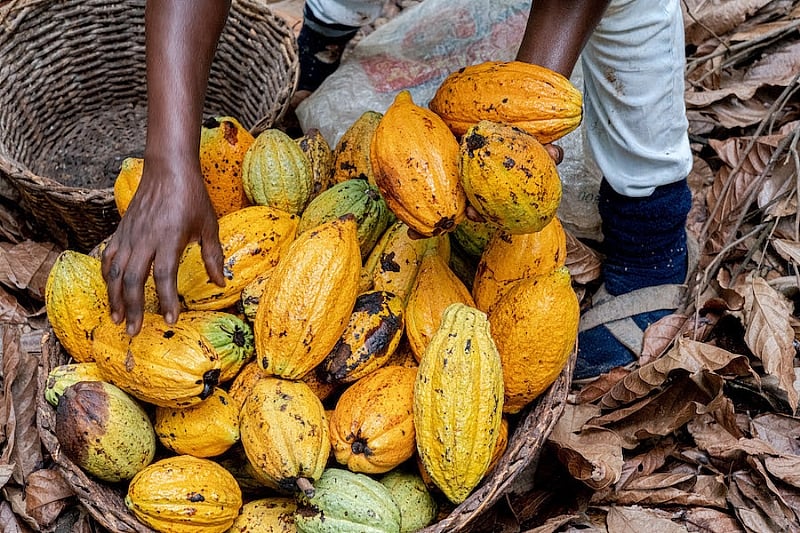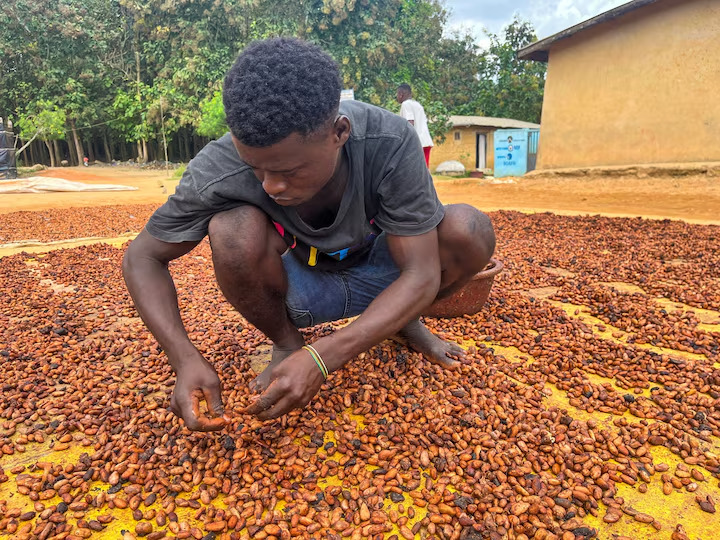A lingering cold snap sweeping across Ivory Coast’s cocoa belt is raising fears among farmers that the nation’s key October-to-March main crop may face serious disruptions. With rainfall well below seasonal averages and sunshine in short supply, many growers say their plantations are under strain and the developing cocoa pods could suffer in the critical weeks ahead.
The West African country, which produces the most cocoa globally, is in the midst of its rainy season, typically stretching from April to mid-November. However, last week’s rainfall fell far short of expectations. In Soubre, a major cocoa-producing region in the west, only 1.6 millimetres of rain was recorded, 10.4 mm below the five-year average.
“Plantations need more rain and sunshine,” said Kouassi Kouame, a farmer from Soubre. Growers across the cocoa heartlands, including Agboville, Divo, and Abengourou, echoed similar concerns. Although the current crop still shows promise, with a healthy mix of small, average, and large pods, farmers caution that without timely sunshine and rain, younger pods, known as cherelles, may fall prematurely, cutting yields.
Despite the weather setbacks, farmers reported that the crop is holding up for now in regions like Daloa, Bongouanou, and Yamoussoukro. But the urgency remains: if rain and sunshine don’t improve soon, the trees may not reach optimal productivity.
Farmers Delay Sales Over Price Hopes
In some areas, bean supply is already tight. However, growers expect availability to pick up from mid-August. Interestingly, many farmers have begun stockpiling their limited cocoa bean harvests, holding off on sales in anticipation of a more favourable price when the government announces a new marketing rate in early October.
“The quantities coming from the bush will increase this month. But very few farmers will want to sell,” noted Celestin Goli, a grower near Daloa, where rainfall reached only 3.4 mm last week—16.1 mm below average. Farmers widely believe that ahead of October’s presidential elections, the government will hike prices to win support. The current fixed rate stands at 2,200 CFA francs ($3.90) per kilogram, and growers are banking on a notable increase.
Last week’s average national temperatures ranged from 24.3°C to 27.9°C, within normal limits, but inadequate sunshine has slowed cocoa development.
Ivory Coast and neighbouring Ghana are the powerhouses of global cocoa, together accounting for more than half of the world’s supply. In 2023, Ivory Coast alone produced about 2.38 million tonnes, roughly one-third of global output, while Ghana followed with around 654,000 tonnes. But the two cocoa giants are now grappling with overlapping crises: declining yields, aging plantations, and worsening weather patterns.

Consecutive years of shrinking harvests in Ivory Coast have prompted regulators to issue warnings. They now fear that average output during peak seasons could drop below 1.3 million tonnes, jeopardizing the industry’s long-term viability.
Cocoa farming is the economic backbone of Ivory Coast, underpinning the livelihoods of millions. However, environmental degradation, deforestation, and troubling labour conditions continue to cloud the sector’s sustainability. The global demand for chocolate shows no signs of slowing down, but the fragile production outlook in West Africa is a growing concern for markets, policymakers, and farmers alike.
The next few weeks will be crucial. If weather patterns do not improve, the repercussions may ripple far beyond the region, impacting cocoa prices and supplies worldwide.
READ ALSO: Goldman Sachs Holds Brent Oil Forecast at $64 Despite Supply Risks



















